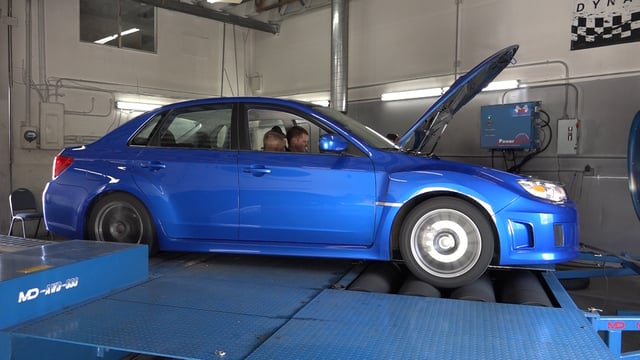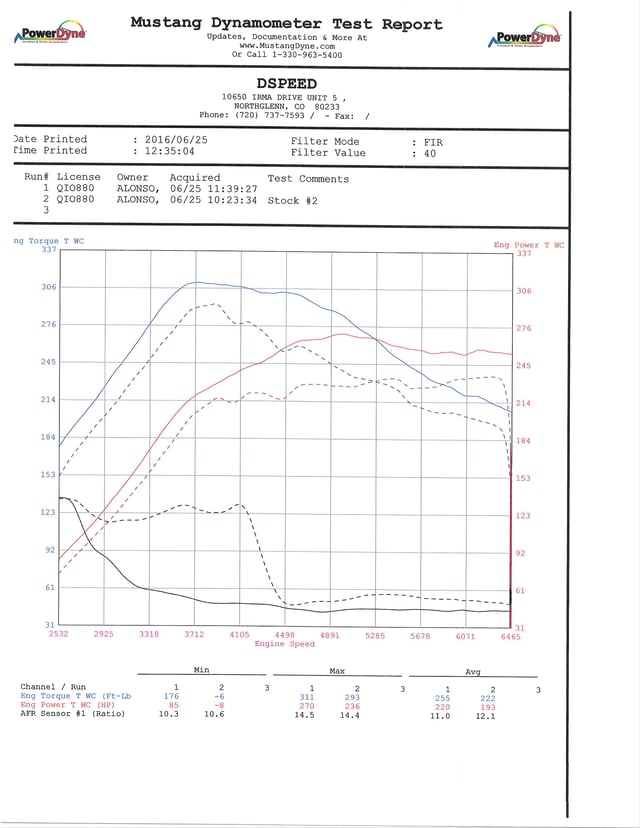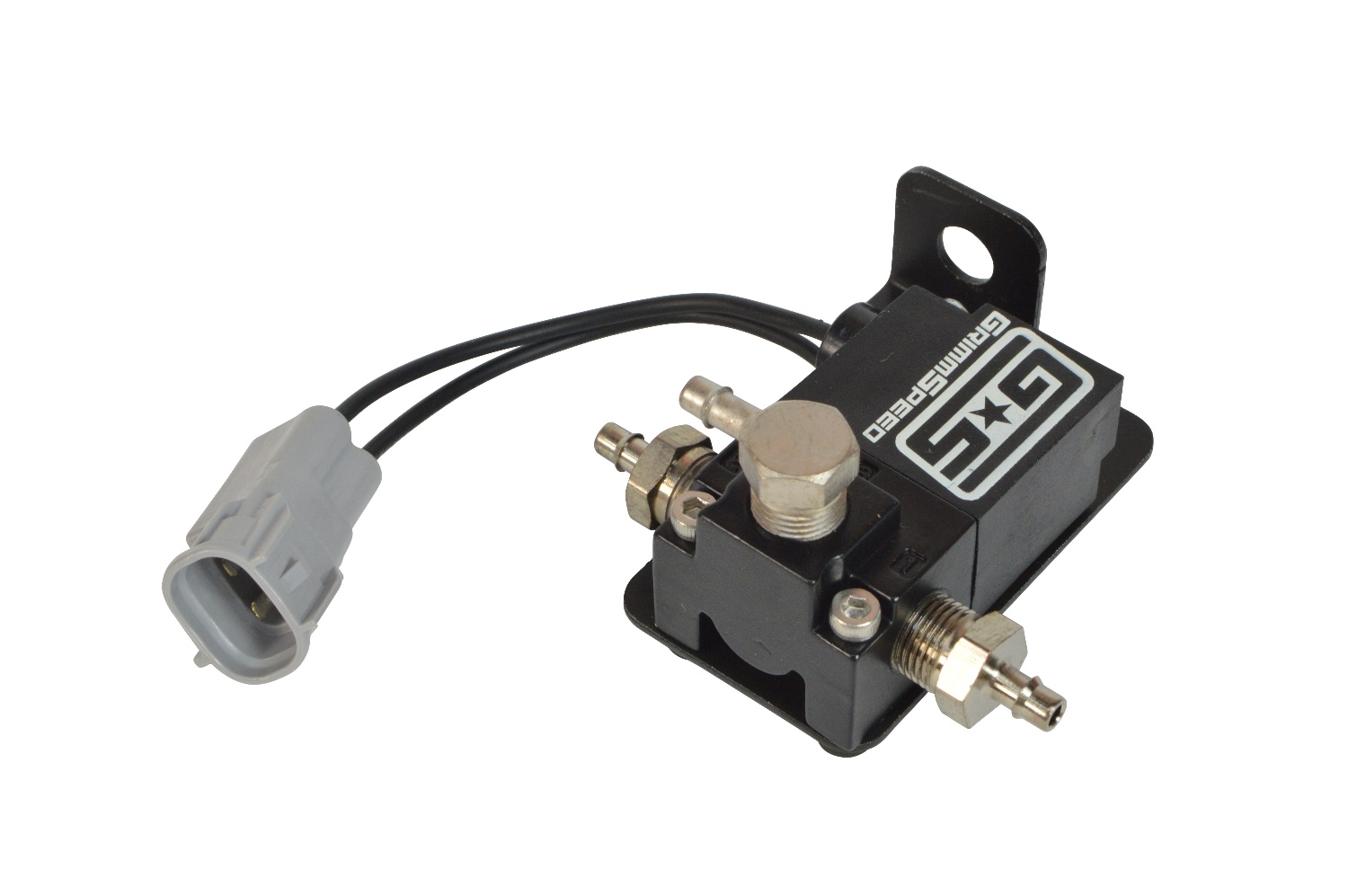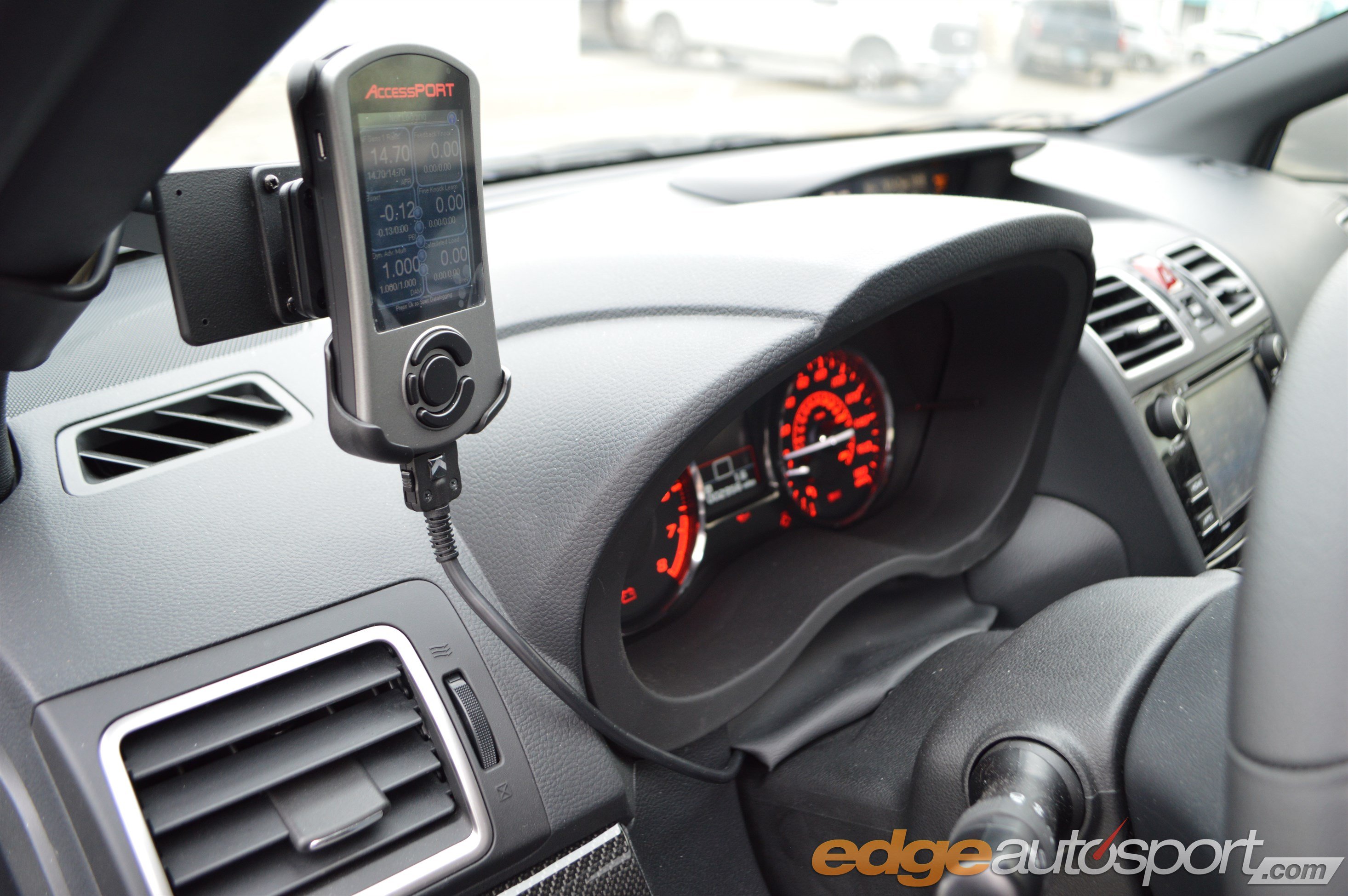

Our 2013 Subaru WRX sedan was purchased used in completely stock condition. It originally had about 13,000 miles on it so it was very fresh and ready to accept some modifications. Our approach with this project is different than what we've done before. To be frank, we're not interested in pushing this car to the limit which is different than what we typically like to do (take, for example, our fragmented, blown engine block in our Ford Focus ST as a result of pushing the limits too far). Our WRX was bought with the intention of educating our WRX customers, EJ25 enthusiasts specifically, and anyone else interested.
You might not immediately think of this reason but we also bought it to educate ourselves. Up until now, we've been playing with nothing but direct injected cars. Sure, the concept is still the same. Mix some air and fuel, compress it, ignite it, and boom, you have power. But for how much we knew about the WRX platform, we didn't have a whole lot of "hands on" with it. With how influential and popular this platform is, we had to jump in and find out everything we could about this platform to further our knowledge and have some fun with a highly modifiable platform.
 First up was ECU tuning. The Cobb AccessPort was a no brainer for us. Many of you know the benefits of this already, as well as us. We love it and there are several reasons for anyone with this type of Subaru to love it too. Obviously, the main objective with the AccessPort is tuning the car to run at the most efficient level as possible while still making a good amount of power and maintaining reliability and safety. Cobb has some decent off the shelf maps that are a great starting point for anyone. The problem for us is that we live and commute anywhere between 5,200-6,000 feet above sea level on a regular basis. Beginning about 20 minutes west of dowtown Denver, CO, you can find one of the largest assortments of beautiful mountain roads, canyons, and highway passes over the Rocky Mountain range that are all higher than even our local area. This includes Vail Pass where on a federal interstate, you're driving above 10,600 ft of altitude and can open it up in any gear you want. You can even drive to the summits of some of the famous "14ers", like Pikes Peak where the altitude is 14,000 ft above sea level. If you thought cars were slow in high altitude cities, give it a good WOT run up Pikes Peak on one of the straighter sections and you'll quickly feel what thin air does to an engine. This is what make the Pikes Peak Hill Climb one of the most challenging races for any engine and ECU tuner. The Cobb off-the-shelf maps are designed for the majority of AccessPort owners and their geographic location. We are not in the majority, to say the least. The great thing is they work up here still. The bad thing is, they leave a lot to be desired for us.
First up was ECU tuning. The Cobb AccessPort was a no brainer for us. Many of you know the benefits of this already, as well as us. We love it and there are several reasons for anyone with this type of Subaru to love it too. Obviously, the main objective with the AccessPort is tuning the car to run at the most efficient level as possible while still making a good amount of power and maintaining reliability and safety. Cobb has some decent off the shelf maps that are a great starting point for anyone. The problem for us is that we live and commute anywhere between 5,200-6,000 feet above sea level on a regular basis. Beginning about 20 minutes west of dowtown Denver, CO, you can find one of the largest assortments of beautiful mountain roads, canyons, and highway passes over the Rocky Mountain range that are all higher than even our local area. This includes Vail Pass where on a federal interstate, you're driving above 10,600 ft of altitude and can open it up in any gear you want. You can even drive to the summits of some of the famous "14ers", like Pikes Peak where the altitude is 14,000 ft above sea level. If you thought cars were slow in high altitude cities, give it a good WOT run up Pikes Peak on one of the straighter sections and you'll quickly feel what thin air does to an engine. This is what make the Pikes Peak Hill Climb one of the most challenging races for any engine and ECU tuner. The Cobb off-the-shelf maps are designed for the majority of AccessPort owners and their geographic location. We are not in the majority, to say the least. The great thing is they work up here still. The bad thing is, they leave a lot to be desired for us.
Before we physically modified anything on the car, we got to tuning the ECU so that we could have a good foundation for where our modifications are going to take us. It's a good thing we did. Here are the results of our tuning efforts.
STOCK DYNO PULL vs. TUNED DYNO PULL
- Gas used: Shell 91 octane (seems to be great 91 oct compared to most other places in the country)
- Dyno used: Mustang AWD 500
- Modifications to car: None

You can see that there is almost a ridiculous amount of area under the curve gained from just tuning the car. We're not really concerned with peak numbers here. We're certainly not bragging about what a stock WRX can make. What we like is how much smoother the curve is, especially the fueling. We found the stock fueling curve to be interesting, at the least. You can see that the ECU doesn't take the car out of a stoichiometric mixture (14.7:1 air-to-fuel ratio) until after peak torque and boost is already hitting with full force. It's running very lean at that point and with Cobb's Stage 1 fueling changes, which we didn't modify, it brings the fuel in much earlier and actually has it running richer throughout the entire RPM range. This helps keep the cylinder temps down and contributes to controlling knock.
We could have continued dialing in the curve a little more but we stopped here knowing that we're going to be back on the dyno again soon with some hard parts on the car.
In Part 2, we'll continue dialing in the car on the dyno and show some exhaust installation and sound bits.
Have questions or comments? Post them below and we'll engage.
I'm the founder of Edge Autosport and I remember first getting into cars in high school. I read all the magazines, bought a bunch of technical books, and finally got to start wrenching around the age of 19. I really enjoy modding and being able to live out a passion is truly awesome. I wouldn't change a thing.
Topics:





